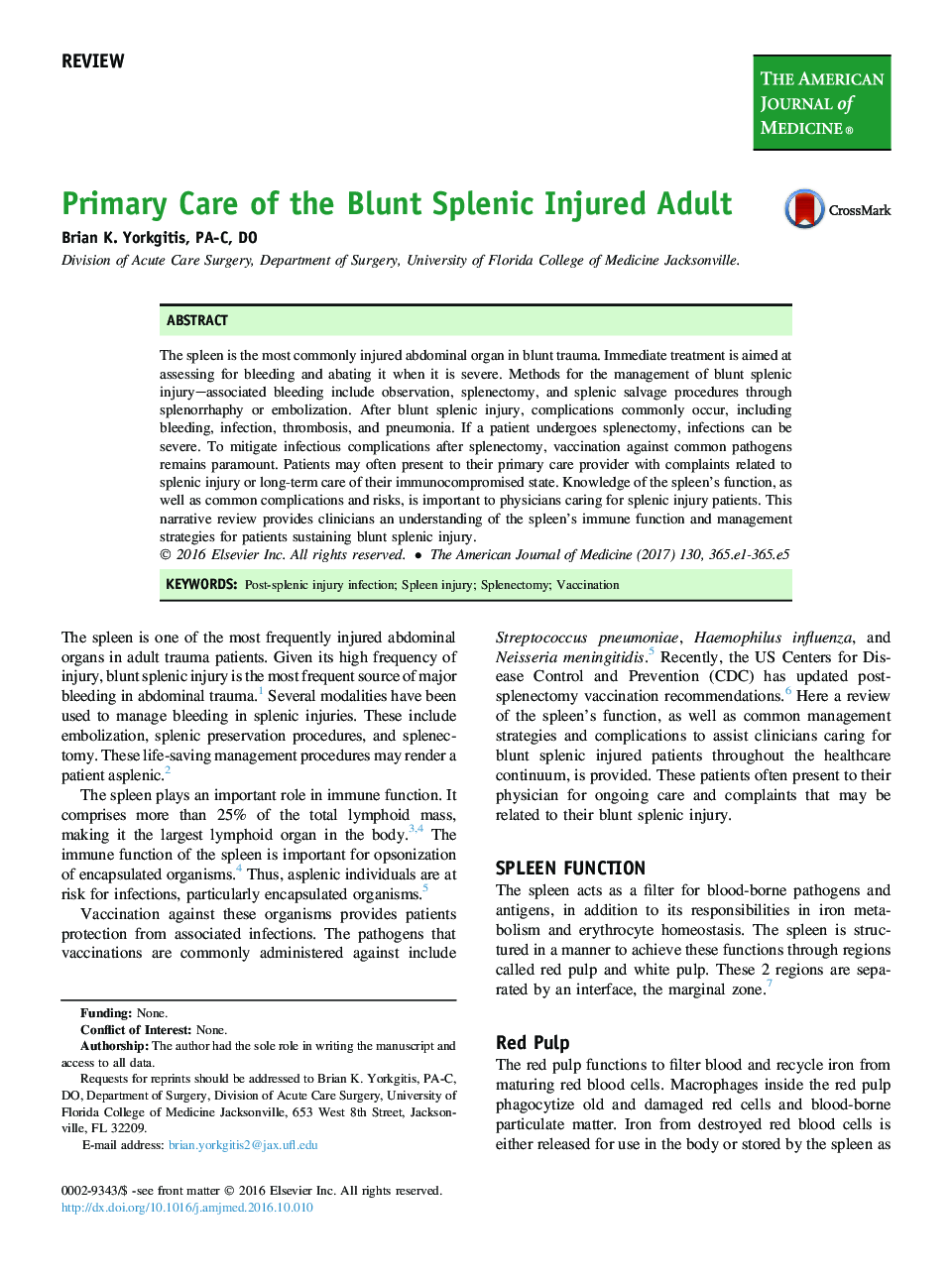| Article ID | Journal | Published Year | Pages | File Type |
|---|---|---|---|---|
| 5576348 | The American Journal of Medicine | 2017 | 5 Pages |
Abstract
The spleen is the most commonly injured abdominal organ in blunt trauma. Immediate treatment is aimed at assessing for bleeding and abating it when it is severe. Methods for the management of blunt splenic injury-associated bleeding include observation, splenectomy, and splenic salvage procedures through splenorrhaphy or embolization. After blunt splenic injury, complications commonly occur, including bleeding, infection, thrombosis, and pneumonia. If a patient undergoes splenectomy, infections can be severe. To mitigate infectious complications after splenectomy, vaccination against common pathogens remains paramount. Patients may often present to their primary care provider with complaints related to splenic injury or long-term care of their immunocompromised state. Knowledge of the spleen's function, as well as common complications and risks, is important to physicians caring for splenic injury patients. This narrative review provides clinicians an understanding of the spleen's immune function and management strategies for patients sustaining blunt splenic injury.
Keywords
Related Topics
Health Sciences
Medicine and Dentistry
Medicine and Dentistry (General)
Authors
Brian K. PA-C, DO,
